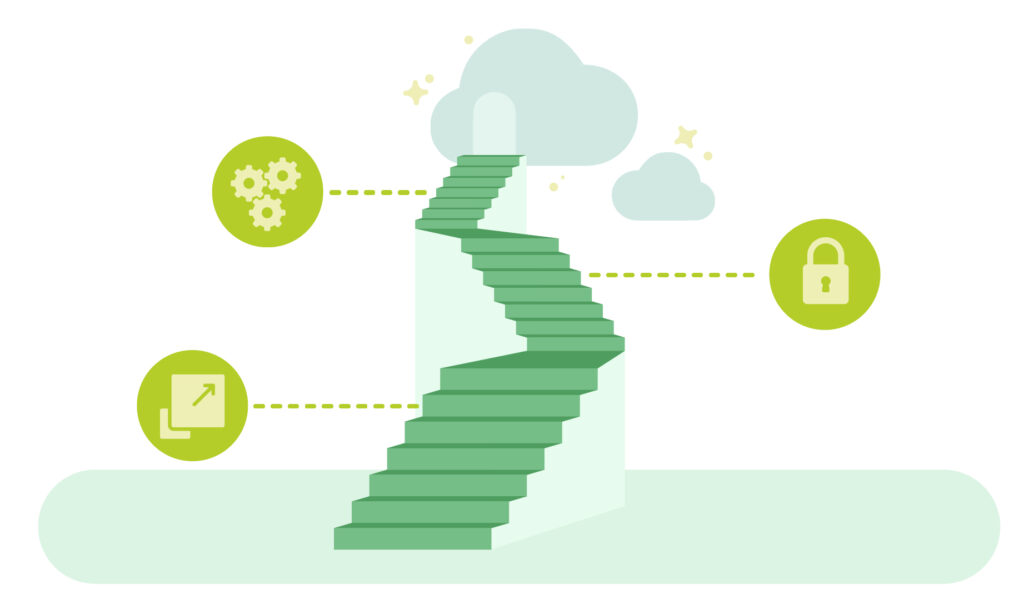
- Zero-downtime migration means that systems move to the Atlassian Cloud while work continues without interruption.
- Success lies in thorough preparation: analysis, test migration, and clear coordination before the actual move.
- A migration delivers not only continuity, but also improvements—especially in permissions, structures, and workflows.
- Honicon combines process consulting and technical expertise to make cloud transitions structured, safe, and transparent.
A Monday morning at a mid-sized company. Jira is up, Confluence provides the usual overview, projects are running smoothly. Then a sentence from management: “The systems are moving to the cloud.” A decision that demands technical expertise, forward-looking planning, and clear communication.
Honicon has been supporting this step for years. The company’s roots lie in process consulting. The focus is on structures, workflows, and roles. Every action in the system should make sense. Efficiency, stability, traceability—these are the cornerstones.
Experience from process consulting
The starting point of any migration is understanding the existing processes. Processes rarely emerge on the drawing board; they grow with the people who shape them. Over the years, the focus of Honicon consulting has been to make processes faster, more efficient, and more cost-effective. This experience flows directly into technical projects. A migration is not a mere copy of data, but a reorganization of system logic.
Honicon’s consultants delve deep into the structures of Jira, Confluence, and Assets. Permissions, workflows, automations—they form the backbone of daily work. Adjusting them requires precision. Every incorrect assignment creates uncertainty. Every clean structure creates clarity.
The path to the cloud
Moving on-premises systems to the Atlassian Cloud marks a turning point for many organizations. Security, scalability, and maintenance-free operation come to the fore. At the same time, questions arise: Which data will move with it? Which permissions remain valid? Which workflows still make sense?
Honicon’s experience shows that a migration without downtime is no utopia. It requires planning, coordination, and control. Most of the work happens before the actual move. Every project starts with preparation—analyses, data reviews, coordination with those responsible. A clear plan replaces haste.

Preparation as the key
Conversations with customer teams often reveal the same picture: technical complexity is manageable; organizational preparation determines success or stagnation. The preliminary discussion lays the foundation. Which projects should migrate first? Which areas of the company must not be impaired at any point?
This is where the principle of test migration applies. Individual projects, workflows, or Confluence spaces are migrated to an isolated environment. Results feed into checklists and approval logs. Only once functionality has been fully verified does the entire instance move. Maintaining operational capability is the priority. No team should be slowed down by technical transitions.
Opportunities of migration
A cloud migration is not just a change of location for the systems; it also provides room for improvement. Legacy permission structures, sprawling project landscapes, and unclear workflows come under the scrutiny of analysis. Honicon uses this moment to create order.
Permissions continue to follow clear rules after the migration. Project structures can be given a new logic. Ideally, redundancies resolve. The cloud offers a stable foundation, but what matters is the design on top of it. A migration without optimization wastes potential.
Between worlds
The move to the Atlassian Cloud is at the center of many projects. But not every company takes the same path. Some instances move from the Atlassian Data Center to an on-premises version of Plane.so. The reasons can lie in data protection requirements, integration logic, or licensing policy. Honicon supports these paths as well—with the same methodological rigor.
Every environment has its quirks. Every migration requires respect for the existing system architecture. The goal remains an interruption-free transition. Zero downtime means work continues while systems change.

Structure beats speed
Technology enables speed, but structure guarantees success. A cloud move within the Atlassian ecosystem therefore does not follow a standardized process, but a clear sequence: analysis, testing, adjustment, approval, execution. Every step is controlled.
Avoiding downtime is not magic, but preparation. Every parameter, every interface, every workflow is checked in test migrations. The actual cutover happens only when all stakeholders give their consent.
Experience as a safety factor
Honicon looks back on migrations. Every project is informed by experience in process consulting, system architecture, and change management. The technical aspect is only one side. The other side concerns the people who work with Jira and Confluence every day.
A migration is always also communication. Those who inform early build trust. Those who explain clearly reduce resistance. Honicon guides teams through this change with pragmatic clarity. No big promises, but transparent steps.
Outlook
Atlassian is continuously advancing its cloud strategy. Companies face the decision of whether to take the step now or wait. Honicon shows that a zero-downtime migration is not a risk, but a process that can be planned.
Process consulting, technical expertise, and experience in the Atlassian environment combine into a practice that makes the transition safe. The result is a system that runs stably, works more efficiently, and leaves room for growth.